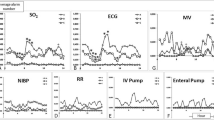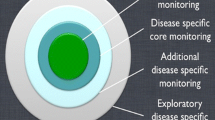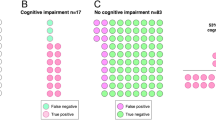Abstract
Neurocritical care relies on the continuous, real-time measurement of numerous physiologic parameters. While our capability to obtain such measurements from patients has grown markedly with multimodal monitoring in many neurologic or neurosurgical intensive care units (ICUs), our ability to transform the raw data into actionable information is limited. One reason is that the proprietary nature of medical devices and software often prevents neuro-ICUs from capturing and centrally storing high-density data. Also, ICU alarm systems are often unreliable because the data that are captured are riddled with artifacts. Informatics is the process of acquiring, processing, and interpreting these complex arrays of data. The development of next-generation informatics tools allows for detection of complex physiologic events and brings about the possibility of decision support tools to improve neurocritical care. Although many different approaches to informatics are discussed and considered, here we focus on the Bayesian probabilistic paradigm. It quantifies the uncertainty inherent in neurocritical care instead of ignoring it, and formalizes the natural clinical thought process of updating prior beliefs using incoming patient data. We review this and other opportunities, as well as challenges, for the development and refinement of informatics tools in neurocritical care.






Similar content being viewed by others
References
Andrews PJD. Critical care management of acute ischemic stroke. Curr Opin Crit Care. 2004;10(2):110–5. http://www.ncbi.nlm.nih.gov/pubmed/15075720. Accessed 7 July 2011.
Stuart RM, Schmidt M, Kurtz P, et al. Intracranial multimodal monitoring for acute brain injury: a single institution review of current practices. Neurocrit Care. 2010;12(2):188–98. http://www.ncbi.nlm.nih.gov/pubmed/20107926. Accessed 14 Apr 2012.
Goldstein B, McNames J, McDonald BA, et al. Physiologic data acquisition system and database for the study of disease dynamics in the intensive care unit. Crit Care Med. 2003;31(2):433–41. http://www.ncbi.nlm.nih.gov/pubmed/12576948. Accessed 7 July 2011.
Tsien CL, Fackler JC. Poor prognosis for existing monitors in the intensive care unit. Crit Care Med. 1997;25(4):614–9. http://www.ncbi.nlm.nih.gov/pubmed/9142025. Accessed 26 June 2011.
Stylianides N, Dikaiakos MD, Gjermundrød H, Panayi G, Kyprianou T. Intensive care window: real-time monitoring and analysis in the intensive care environment. IEEE Trans Inf Technol Biomed. 2011;15(1):26–32. http://www.ncbi.nlm.nih.gov/pubmed/21062685. Accessed 26 June 2011.
Lee J, Scott DJ, Villarroel M, et al. Open-access MIMIC-II database for intensive care research. Conf Proc IEEE Eng Med Biol Soc. 2011;2011:8315–8. http://www.ncbi.nlm.nih.gov/pubmed/22256274. Accessed 7 July 2011.
Gomez H, Camacho J, Yelicich B, et al. Development of a multimodal monitoring platform for medical research. Conf Proc IEEE Eng Med Biol Soc. 2010;2010:2358–61. http://www.ncbi.nlm.nih.gov/pubmed/21097226. Accessed 9 Oct 2011.
Brito M, Vale L, Carvalho P, Henriques J. A sensor middleware for integration of heterogeneous medical devices. Conf Proc IEEE Eng Med Biol Soc. 2010;2010:5189–92. http://www.ncbi.nlm.nih.gov/pubmed/21096037. Accessed 9 Oct 2011.
CNS EEG & Multimodal Neuromonitor. Moberg Research website. http://www.mobergresearch.com/products-services/neuromonitoring/cns-eeg-multimodal-neuromonitor. Accessed 14 June 2013.
Visualization of Patient Status and Clinical Interventions. Moberg Research website. http://www.mobergresearch.com/products-services/neuromonitoring/cns-eeg-multimodal-neuromonitor/case-studies/87-university-of-california-san-francisco-july-10-2012. Accessed 14 June 2013.
Yuan X, Bagga S, Shen J, Balakrishnan M, Benhaddou D. DS-MAC: differential service medium access control design for wireless medical information systems. Conf Proc IEEE Eng Med Biol Soc. 2008;2008:1801–4. http://www.ncbi.nlm.nih.gov/pubmed/19163031. Accessed 15 Nov 2011.
Piper I, Chambers I, Citerio G, et al. The brain monitoring with Information Technology (BrainIT) collaborative network: EC feasibility study results and future direction. Acta Neurochir. 2010;152(11):1859–71. http://www.ncbi.nlm.nih.gov/pubmed/20589400. Accessed 9 Oct 2011.
Cao H, Norris P, Ozdas A, Jenkins J, Morris JA. A simple non-physiological artifact filter for invasive arterial blood pressure monitoring: a study of 1852 trauma ICU patients. Conf Proc IEEE Eng Med Biol Soc. 2006;1(1):1417–20. http://www.ncbi.nlm.nih.gov/pubmed/17946044. Accessed 12 Dec 2011.
Aboukhalil A, Nielsen L, Saeed M, Mark RG, Clifford GD. Reducing false alarm rates for critical arrhythmias using the arterial blood pressure waveform. J Biomed Inform. 2008;41(3):442–51. http://www.pubmedcentral.nih.gov/articlerender.fcgi?artid=2504518&tool=pmcentrez&rendertype=abstract. Accessed 15 Nov 2011.
Tsien CL, Kohane IS, McIntosh N. Multiple signal integration by decision tree induction to detect artifacts in the neonatal intensive care unit. Artif Intell Med. 2000;19(3):189–202. http://www.ncbi.nlm.nih.gov/pubmed/10906612. Accessed 12 Dec 2011.
Clifford GD, Long WJ, Moody GB, Szolovits P. Robust parameter extraction for decision support using multimodal intensive care data. Philos Trans Series A. 2009;367(1887):411–29. Available at: http://www.pubmedcentral.nih.gov/articlerender.fcgi?artid=2617714&tool=pmcentrez&rendertype=abstract. Accessed 26 June 2011.
Morabito D, Francisco UCS, Russell S, et al. Probabilistic detection of short events, with application to critical care monitoring. Blood Press Monit. 2003;1:1–8.
Hemphill JC, Andrews P, De Georgia M. Multimodal monitoring and neurocritical care bioinformatics. Nat Rev Neurol. 2011;7(8):451–60. http://www.ncbi.nlm.nih.gov/pubmed/21750522. Accessed 9 Aug 2011.
Oddo M, Levine JM, Mackenzie L, et al. Brain hypoxia is associated with short-term outcome after severe traumatic brain injury independently of intracranial hypertension and low cerebral perfusion pressure. Neurosurgery. 2011;69(5):1037–45; discussion 1045. http://www.ncbi.nlm.nih.gov/pubmed/21673608. Accessed 14 June 2013.
Hemphill JC, Barton CW, Morabito D, Manley GT. Influence of data resolution and interpolation method on assessment of secondary brain insults in neurocritical care. Physiol Meas. 2005;26(4):373–86. http://www.ncbi.nlm.nih.gov/pubmed/15886433. Accessed 12 Dec 2011.
Sorani MD, Hemphill JC, Morabito D, et al. New approaches to physiological informatics in neurocritical care. Neurocrit Care. 2007;7(1):45–52.
Roure J, Dubrawski A, Schneider J. Learning detectors of events in multivariate time series. AMIA Annu Symp Proc. 2008;2008:171.http://www.pubmedcentral.nih.gov/articlerender.fcgi?artid=2655975&tool=pmcentrez&rendertype=abstract. Accessed 6 July 2011.
Zhang Y, Szolovits P. Patient-specific learning in real time for adaptive monitoring in critical care. J Biomed Inform. 2008;41(3):452–60. http://www.ncbi.nlm.nih.gov/pubmed/18463000. Accessed 6 July 2011.
Hornero R, Aboy M, Abásolo D. Analysis of intracranial pressure during acute intracranial hypertension using Lempel–Ziv complexity: further evidence. Med Biol Eng Comput. 2007;45(6):617–20. http://www.ncbi.nlm.nih.gov/pubmed/17541667. Accessed 12 Dec 2011.
Sun Y, Chan KL, Krishnan SM. Life-threatening ventricular arrhythmia recognition by nonlinear descriptor. Biomed Eng Online. 2005;4(1):6. http://www.pubmedcentral.nih.gov/articlerender.fcgi?artid=549211&tool=pmcentrez&rendertype=abstract. Accessed 1 Dec 2011.
Consonni F, Abate MG, Galli D, Citerio G. Feasibility of a continuous computerized monitoring of cerebral autoregulation in neurointensive care. Neurocrit Care. 2009;10(2):232–40. http://www.ncbi.nlm.nih.gov/pubmed/18925365. Accessed 14 Sept 2011.
Smielewski P, Lavinio A, Timofeev I, et al. ICM+, a flexible platform for investigations of cerebrospinal dynamics in clinical practice. Acta Neurochir Suppl. 2008;102:145–51. http://www.ncbi.nlm.nih.gov/pubmed/19388307. Accessed 14 Sept 2011.
Lehman L-W, Moody G, Heldt T, Kyaw TH. NIH Public Access. Crit Care. 2011;39:952–960.
Li M, Pickering BW, Smith VD, et al. Medical informatics: an essential tool for health sciences research in acute care. Bosn J Basic Med Sci. 2009;9(Supplement 1):34–9. http://www.ncbi.nlm.nih.gov/pubmed/19912124. Accessed 4 Aug 2011.
Portet F, Gatt A, Reiter E, et al. Summarising complex ICU data in natural language: demonstration of the BT-45 system. In: AMIA annual symposium proceedings; 2008. p. 1225. http://www.ncbi.nlm.nih.gov/pubmed/18998986. Accessed 12 Dec 2011.
Jordan D, Rose SE. Multimedia abstract generation of intensive care data: the automation of clinical processes through AI methodologies. World J Surg. 2010;34(4):637–45. http://www.ncbi.nlm.nih.gov/pubmed/20012610. Accessed 12 Dec 2011.
Chuang C-L. Case-based reasoning support for liver disease diagnosis. Artif Intell Med. 2011;53(1):15–23. http://www.ncbi.nlm.nih.gov/pubmed/21757326. Accessed 4 Aug 2011.
Armengol E. Classification of melanomas in situ using knowledge discovery with explained case-based reasoning. Artif Intell Med. 2011;51(2):93–105. http://www.ncbi.nlm.nih.gov/pubmed/21074978. Accessed 12 Dec 2011.
Chi C-L, Street WN, Katz DA. A decision support system for cost-effective diagnosis. Artif Intell Med. 2010;50(3):149–61. http://www.ncbi.nlm.nih.gov/pubmed/20933375. Accessed 30 July 2011.
Ji S-Y, Smith R, Huynh T, Najarian K. A comparative analysis of multi-level computer-assisted decision making systems for traumatic injuries. BMC Med Inform Decis Mak. 2009;9:2. http://www.pubmedcentral.nih.gov/articlerender.fcgi?artid=2661076&tool=pmcentrez&rendertype=abstract. Accessed 12 Dec 2011.
Denai M, Mahfouf M, Ross J. A fuzzy decision support system for therapy administration in cardiovascular intensive care patients. In: IEEE international fuzzy systems conference; 2007. p. 1–6. http://ieeexplore.ieee.org/lpdocs/epic03/wrapper.htm?arnumber=4295361. Accessed 13 Dec 2011.
Transactions I, Biomedical ON. 1MA Tol 1MA Tol 1MA Tol 1MA Tol 1MA Tol 1MA 1MA Tol. Assessment. 2006;53(8):1700–1705.
Airstrip Technologies. Airstrip Solutions. Airstrip Technologies. http://www.airstriptech.com/Portals/_default/Skins/AirstripSkin/tabid/55/Default.aspx. Accessed 13 Dec 2011.
Hu X, Xu P, Scalzo F, Vespa P, Bergsneider M. Morphological clustering and analysis of continuous intracranial pressure. IEEE Trans Biomed Eng. 2009;56(3):696–705.
Heldt T, Kashif F, et al. Continuous quantitative monitoring of cerebral oxygen metabolism in neonates by ventilator-gated analysis of NIRS recordings. Acta Neurochir Suppl. 2012;114:177–80.
Kashif F, Verghese GC, et al. Model-based noninvasive estimation of intracranial pressure from cerebral blood flow velocity and arterial blood pressure. Sci Transl Med. 2012;4:129ra44.
Stiefel MF, Udoetuk JD, et al. Conventional neurocritical care and cerebral oxygenation after traumatic brain injury. J Neurosurg. 2006;105:568–75.
Roederer A, Hicks A, et al. Clinical decision support for integrated cyber-physical systems: a mixed methods approach. Proceedings of the 2nd ACM SIGHIT IHI Symposium. 2012:871–874.
Artificial ventilation monitor—Inter GMX. MedicalExpo website. http://www.medicalexpo.com/prod/intermed-equipamento-medico-hospitalar-ltda/artificial-ventilation-monitors-68891-435389.html. Accessed 12 Mar 2012.
PhysioSonics Cerebral Blood Flow Monitor. Medgadget website. http://medgadget.com/2011/11/physiosonics-cerebral-blood-flow-monitor-to-help-detect-vasospasm-on-the-battlefield.html. Accessed 16 Mar 2012.
Life Scope A BSM-5100 series. Konti Medical website. http://www.kontimedical.com/nihon-kohden/life-scope-a-bsm-5100-series. Accessed 16 Mar 2012.
Integra Licox Brain Tissue Oxygen Monitoring. Integra LifeSciences website. http://www.priniotakis.gr/catalog3/product_info.php. Accessed 16 Mar 2012.
Aspect A-2000 BIS Monitor Service Information Manual. Aspect Medical Systems website. http://asrs.aspectms.com/Manuals/A2000/075-0014XPServInfo.pdf. Accessed 16 Mar 2012.
Life Scope® A BSM-1500 bedside monitor; Integra Licox® brain tissue oxygenation monitor; Aspect A-2000™ BIS anesthesia monitor; PhysioSonics® CBF monitor; Inter® GMX ventilation monitor.
ICM+ features. Cambridge University: Neurosurgery Unit website. http://www.neurosurg.cam.ac.uk/pages/ICM/features.php. Accessed 15 Mar 2012.
Conflict of interest
Ahilan Sivaganesan, Geoffrey T. Manley, and Michael C. Huang declare that they have no conflict of interest.
Author information
Authors and Affiliations
Corresponding author
Rights and permissions
About this article
Cite this article
Sivaganesan, A., Manley, G.T. & Huang, M.C. Informatics for Neurocritical Care: Challenges and Opportunities. Neurocrit Care 20, 132–141 (2014). https://doi.org/10.1007/s12028-013-9872-8
Published:
Issue Date:
DOI: https://doi.org/10.1007/s12028-013-9872-8




